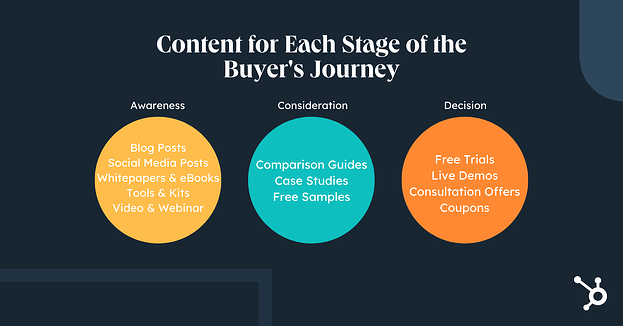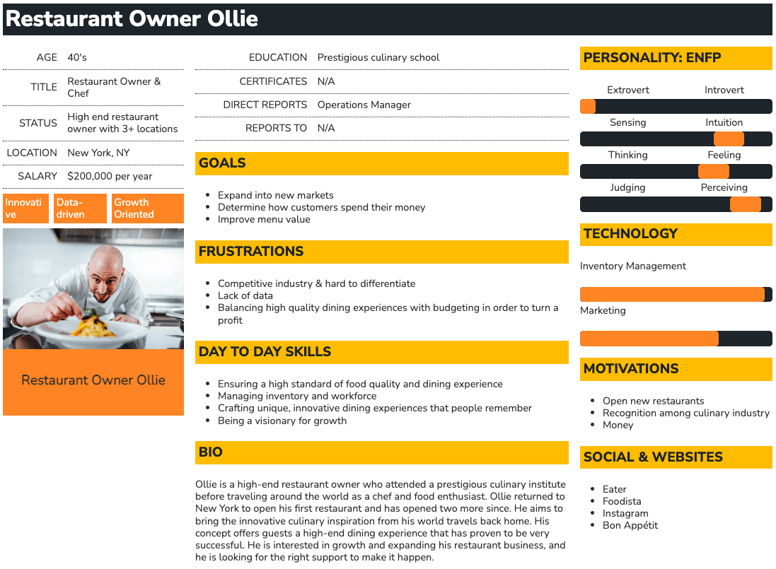Priorities. We create them with the best of intentions, then unintentionally ignore them. What do you quickly push to the bottom of your list? Here's an analogy about priorities.
My dad always tells me, "You shouldn't drive on the bottom half of the gas tank. It will wreck the fuel pump." Yet I squeeze every mile possible out of the tank before I stop to fill the tank half full. Yes. I'm still driving on the bottom half of the tank.
What happens when you do this with content? Your site traffic will decrease as a result of poor organic search results, sales will suffer, and so will your revenue stream. You have to drive your overall marketing strategy on the top half of the tank. Content marketing is the fuel for your inbound marketing strategy. You can't push content to the bottom of your priority list. We created this step-by-step guide to help you create a content strategy that will keep your marketing strategy fueled.
Quick Links
- Why You Need a Content Strategy
- 8 Repeatable Steps to Create a Content Strategy
- Step 1. Clearly define your content objectives.
- Step 2. Conduct buyer persona research.
- Step 3. Brainstorm content ideas.
- Step 4. Conduct a content audit.
- Step 5. Determine which type of content you want to create.
- Step 6. Publish and promote your content.
- Step 7. Track performance, monitor, and analyze your content strategy regularly.
Why You Need a Content Strategy
If you don't provide your prospects and customers with the information they are looking for when they need it, they will quickly move on to one of your competitors. Writing content to build your inventory without a strategy is really just a waste of time. Humans have learned to filter boring and/or unnecessary information quickly in the digital age. Providing engaging, informative content will keep prospects on your website and keep them coming back. A well-defined content strategy helps you:
- Define your marketing goals and set priorities
- Track progress
- Identify new opportunities
- Optimize your sales and marketing team
- Produce content that converts
Content can be in the form of things like blog articles, infographics, white papers, eBooks, podcasts, videos, and social posts.
8 Repeatable Steps to Create a Content Strategy
Developing a content strategy is not something that can be done quickly, nor should you do it alone. You need the input of the whole marketing team. Let’s get started!
Step 1. Clearly define your content objectives
In order for your content to work, it needs to align with your business goals. Setting SMART goals provides a realistic timeline and defines goals that are achievable. Gather your sales and marketing teams and determine the content's purpose. Building your content inventory shouldn't be the answer. You've got to dig deeper. Are you trying to solve a problem, provide an answer or meet a need? Do you want to educate them on how your product stacks up to the competition? Content should help move prospects down the sales funnel, converting them from leads into customers. It’s important to have content for all three stages of the buyer's journey.
Awareness. Consideration. Delight.
Some content will overlap, and that’s ok. A blog post you’ve written might be a comparison guide for CRMs. That piece of content serves two purposes. It’s critical that you map content across all stages of the buyer's journey. According to HubSpot, buyers get between 60% and 70% of the way through the buying process BEFORE they are willing to talk to a salesperson!
Step 2. Conduct buyer persona research
A buyer persona is a semi-fictional representation of your ideal customers based on data and research. If you haven't already created buyer personas for your business, now is the time! If you have already created them, revisit them and make sure they are still relevant. Be sure to update your existing buyer persona's if necessary. Get a good understanding of their goals, behaviors, and motivators before moving on. Here’s a list of things to consider when creating buyer personas:
- The industry
- Size of the company (number of employees, annual revenue)
- Role and job title
- Educational background
- Personal demographics
- Tools required to do the job
- Responsibilities
- Biggest challenges — and why
Here’s an example of a buyer persona from our GrowthPlan:
Step 3. Brainstorm content ideas
Schedule a brainstorming meeting with your sales and marketing teams. It's important that they collaborate on content ideas. If only the content manager is creating content ideas, the result will be lopsided. Sales needs to be a part of the content brainstorming because they have very valuable information from the prospect side of the equation. They talk to prospects every day and know their questions and pain points. Sales also knows what content they can use as sales tools are missing. Sales and marketing have to work together for this to be successful. Let teams know well in advance and ask them to bring their ideas to the table as you're building out your content calendar and campaigns. Someone might have an idea that spurs one no one thought of. If you have quarterly content planning meetings like we do, you will walk away from the meeting with a complete list of content for the entire quarter.
Step 4. Conduct a content audit
If you don't know what you already have, you don't know what you need. Just like buyer personas, if you don't have a current inventory of your content, you need to get started. If you already have one, make sure you have identified buyer's journey stages, buyer personas, and keywords for each piece of content, and the topic cluster it is attached to.
It's also important to take a dive into the analytics for all your content to see what's resonating and what's not. Identify content that can be updated or repurposed. This will give you some quick wins right out of the gate. Determine what's resonating and what's not.
Pro tip: you can set up a HubSpot dashboard for quick access to your content data. This process will help you identify content gaps you have.
Step 5. Determine which type of content you want to create
The type of content you create depends a lot on your audience. Are they YouTubers? TikTokers? Do they do most of their research on a desktop computer? Are they digital immigrants and prefer to print out a document to read, or are they digital natives and prefer reading on their smartphone or device? These are things you should have identified when creating your buyer personas.
It will also depend on your service or product. For example, suppose you are selling electric fireplace inserts. In that case, you might want to consider infographics that detail the specs of the unit or DIY project instructions on how to install it. A video might also be helpful so potential customers can see the fireplace working. Whereas if you are a wedding planner, you would focus blog writing on topics surrounding wedding planning and weddings. Images with detailed descriptions to use on social media would also resonate with your audience.
Step 6. Publish and promote your content
Now it's time to deliver your content! When you publish your content, be sure to proofread, proofread, and proofread again. Then have someone else proofread it for you. A fresh set of eyes will see things you might have missed. Also, think about the layout. Is it easy for the reader to digest? Using images, headings, bullet points, or numbered lists help break content up into skimmable chunks. Let's be real — your content is going to be skimmed the majority of the time. Don't assume your users are all reading all of your content.
After you have published your content with the help of your CMS (Content Management System), it's time to promote it. Organic reach will do part of the work, but it's also a good idea to use social media platforms to share your content. Your customers and prospects are already on social media so be sure to share wherever it's relevant to your audience.
- Facebook — 1.9 billion daily active users
- TikTok — 1 billion monthly active users
- Instagram — 1 billion monthly active users
- Twitter — 211 million daily active users
- LinkedIn — 774 million active users
- YouTube — 315 million daily active users
- Snapchat — 306 million daily active users
Be sure to monitor comments and interactions. You can't just post it and wish for the best. It's critical you treat your customers and prospects like humans by engaging with them in the comments.
Step 7. Track performance, monitor, and analyze your content strategy regularly
Your content strategy should always be evolving. The one you create for 2023 might not work in 2024. This time next year, you should start at step one and go through the process again. The more often you do it, the easier it will get, and the more valuable your content will become because it was well planned out to line up with your prospect's and customer's wants, needs, and pain points. Your revenue will increase as sales teams will have the right tools to help convert leads into customers. Don't push your content strategy to the bottom of your end-of-2022 priority list.
Download our Free Blogging Checklist to help you create a content strategy that works.

![How to Create a Content Strategy for 2023 [Step-By-Step Guide]](https://blog.hivestrategy.com/hubfs/How%20to%20Create%20a%20Content%20Strategy%20for%202023%20%5BStep-By-Step%20Guide%5D.png)



.png?width=100&height=100&name=Why%20Were%20Not%20a%20Marketing%20Agency%20(And%20What%20That%20Means%20for%20Your%20Growth).png)
